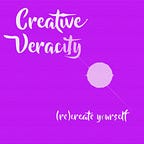Koan Kreativity XV
Using Ancient Wisdom to Inspire Modern Creativity
Presented as either a riddle or tale, the koan is instrumental to the Zen student’s path to enlightenment; by opening and freeing the mind from both outer and inner restrictions, the “empty mind” of the Zen student is more open to insight and realization that could be achieved in no other way.
As artists and creative people we, too, need the benefit of an “empty mind.” Our own creative insights and realizations become more tangible and workable when we clear away the clutter of fear, apathy, negativity, and all other potentially destructive restrictions that we may have learned in our lives.
__________
The Stone Mind
Hogen, a Chinese Zen teacher, lived alone in a small temple in the country. One day four traveling monks appeared and asked if they might make a fire in his yard to warm themselves.
While they were building the fire, Hogen heard them arguing about subjectivity and objectivity. He joined them and said: “There is a big stone. Do you consider it to be inside or outside of your mind?”
One of the monks replied: “From a Buddhist viewpoint everything is an objectification of mind, so I would say that the stone is inside my mind.”
“Your head must feel very heavy,” observed Hogen, “if you are carrying around a stone like that in your mind.”
* * *
What do we keep in our minds that weighs us down? What thoughts, fears, and obsessions prevent us from doing our creative work?
Our ability to create relies on our ability to keep our minds focused on the task at hand. At the same time, our minds must be open enough to acknowledge, receive, and use and inspiration or insight that’s imparted to us through our Muse.
The ballet dancer Tamara Rojo once said, “An idea never comes to me suddenly; it sits inside me for a while, and then emerges. When I’m preparing for a particular character, I look for ideas about her wherever I can. When I first danced Giselle, I found Lars von Trier’s film Dancer in the Dark incredibly inspiring. It was so dark, and it felt just like a modern-day version of Giselle —the story of a young woman taken advantage of by others. It brought the part alive for me. Now when I talk to others who are playing Giselle, they sometimes say they’re worried that it feels like a parody, and not relevant to today. I tell them to watch the film and see how modern it can be.”
This “focused but open” approach to our creativity allows us to be both subjective and objective when it comes to our work.
